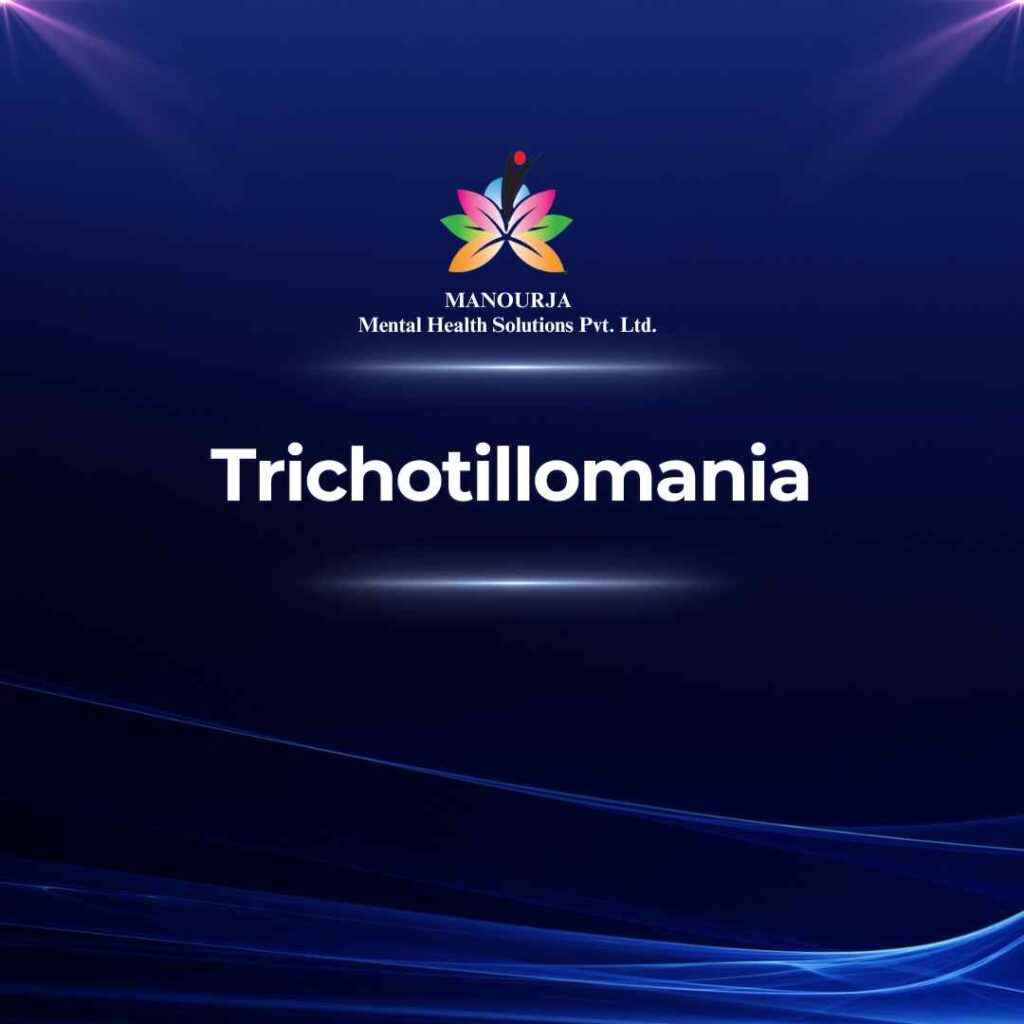Trichotillomania

Trichotillomania, also known as hair-pulling disorder, is a mental health condition characterized by a recurring urge to pull out one’s hair, leading to hair loss and distress. It is classified under Obsessive-Compulsive and Related Disorders in the Diagnostic and Statistical Manual of Mental Disorders, Fifth Edition (DSM-5). The act of pulling hair can provide an emotional release or gratification to the individual, but it also causes significant shame, distress, or impairment in social or occupational functioning.
Symptoms of Trichotillomania
- Recurrent pulling out of one’s hair: This results in noticeable hair loss.
- Increasing sense of tension before pulling the hair or when attempting to resist the behavior.
- Pleasure, gratification, or relief when pulling out the hair.
- Significant distress or impairment in social, professional, or other important areas of functioning.
- The hair pulling is not attributable to another medical condition (e.g., a dermatological condition) and is not better explained by another mental disorder (e.g., body dysmorphic disorder).
Forms of Trichotillomania
Trichotillomania can involve hair from any part of the body, including the scalp, eyebrows, eyelashes, and pubic area. The severity and patterns of hair pulling can vary widely:
- Focused hair pulling: Individuals pull their hair intentionally to relieve tension or distress.
- Automatic hair pulling: Individuals pull their hair without fully realizing they are doing it, often when they are bored, reading, or watching TV.
Treatment of Trichotillomania
Treatment for trichotillomania may involve one or more of the following approaches:
- Behavioral Therapy: Cognitive-behavioral therapy (CBT) is often used, focusing on identifying the triggers that lead to hair pulling and learning alternative coping strategies. Habit reversal training, a component of CBT, teaches individuals to recognize the urge to pull and instead engage in a competing response that is incompatible with hair pulling.
- Medications: There is no specific medication approved for trichotillomania, but some drugs commonly used for other conditions, such as selective serotonin reuptake inhibitors (SSRIs) or antipsychotic medications, may help in reducing the urge to pull hair.
- Support Groups: Joining a support group can provide emotional support and coping strategies, as individuals share their experiences and challenges with trichotillomania.
- Mindfulness and Stress Management: Techniques such as meditation, yoga, and other stress-reduction strategies may help individuals manage the tension that can trigger hair pulling.
Conclusion
Trichotillomania is a complex disorder that often requires a multi-faceted treatment approach. Early intervention can be critical in preventing the development of more severe patterns of hair pulling and reducing the emotional distress associated with the disorder. Individuals struggling with trichotillomania should seek professional help to tailor a treatment plan that meets their specific needs.
At MANOURJA, we believe in the transformative power of counseling. Our experienced therapists offer a safe and supportive space where you can explore your thoughts, emotions, and challenges. Through personalized counselling sessions, we’ll work together to develop coping strategies, build resilience, and achieve lasting positive change. Discover the path to a healthier, happier you with MANOURJA counselling services.
MANOURJA Rehabilitation Services
At MANOURJA, we’re dedicated to helping you in rebuild your life, after difficult times. Our rehabilitation services focus on understanding what you need to move forward, whether you’re recovering from addiction, trauma, or any psychological – social challenges. We create personalized plans, that are all about helping you, regain your strength and find hope again. With a caring team by your side, you’ll have the support to make real progress and take steps toward a brighter, healthier future.
